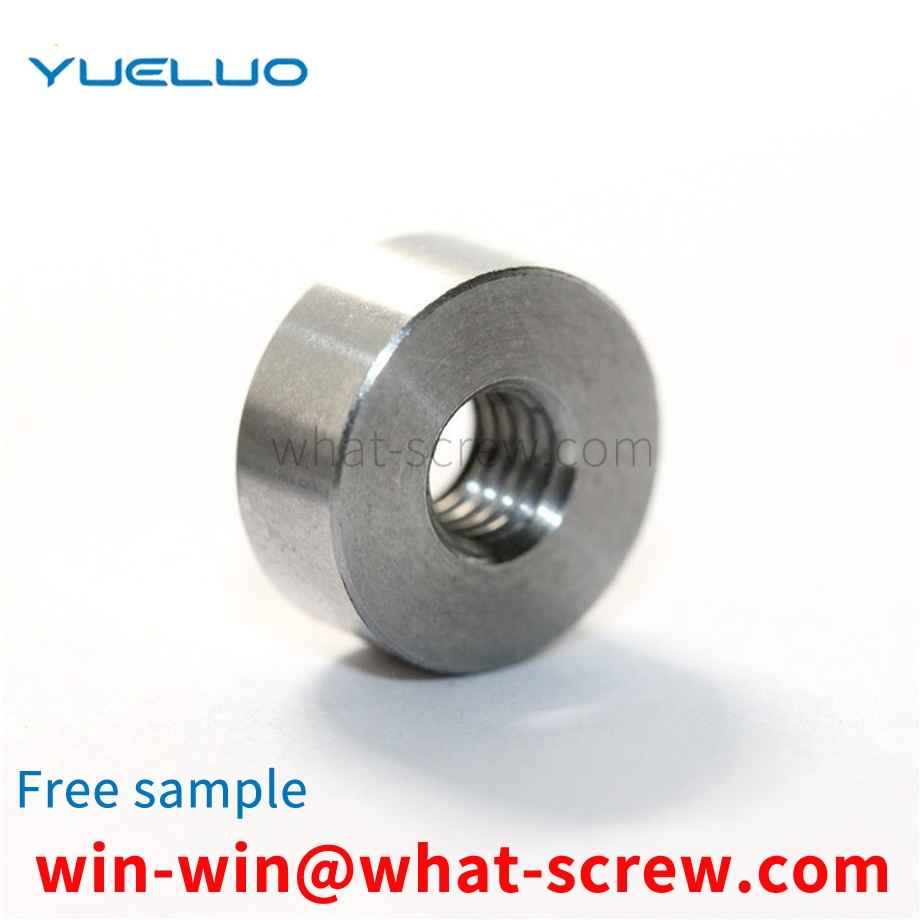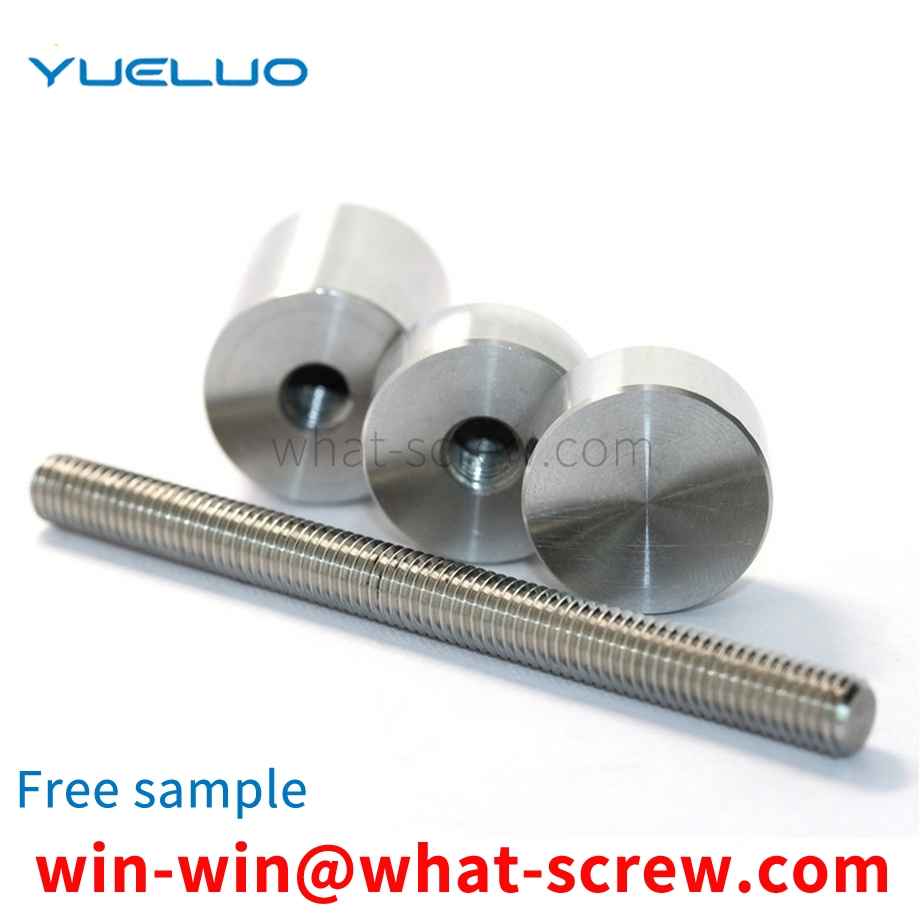Generally known bolts refer to screws with a larger diameter. According to this statement, the diameter of screws is much smaller than that of bolts. Stud bolts do not have a head, and some are called studs. Both ends of the stud are threaded, with no thread in the middle and a smooth rod in the middle. Studs are used on large equipment such as gear racks. In actual use, the external load will have vibration and the influence of temperature will reduce the frictional force, and the threaded connection will loosen and fail over time. Therefore, it is necessary to do a good job in the maintenance of the stud bolts at ordinary times. Stud bolts or anchor bolts will have problems under the action of mechanical friction for a long time. When problems occur, the engine oil pan should be removed, and the use of the engine bearing bushes should be carefully checked, and the clearance between the bearing bushes should be checked. Whether it is too large, if the gap is too large, it should be replaced in time. When replacing the stud bolts, also replace the connecting rod bolts. When some large equipment such as nail making machines are in normal operation, if they find that the engine is not running very stable or there is abnormal noise, they should stop and check in time to avoid bigger problems.
GB/T3103.3-2000 Fastener Tolerance Flat Washers 2 GB/T5286-2001 General Scheme of Flat Washers for Bolts, Screws and Nuts 3 GB/T9074.1-2002 Bolts or Screws and Flat Washers Assemblies 4 GB/T9074. 18-2002 Self-tapping screws and flat washers assemblies 5 GB/T 95-2002 Flat washers C grade 6 GB/T96.1-2002 Large washers A grade 7 GB/T96.2-2002 Large washers C grade 8 GB/T97. 1-2002 Flat washer Class A 9 GB/T97.2-2002 Flat washer chamfered Class A 10 GB/T97.4-2002 Flat washer for screw and washer assemblies 11 GB/T97.5-2002 Flat washer Self-tapping screws and washers assemblies 12 GB/T848-2002 Small washers Class A 13 GB/T5287-2002 Extra large washers Class C 14 GB/T4678.13-2003 Die-casting mold parts Part 13: Push plate washers 15 GB/T4605 -2003 Rolling bearing thrust needle roller and cage assemblies and thrust washers 16 GB/T97.3-2000 Flat washers for pins 17 GB/T18230.5-2000 Flat washers for bolted structures quenched and tempered 18 GB/T9074.5 -2004 Cross recessed small pan head screw and flat washer assembly 19 GB/T9074.20-2004 Cross recessed hexagon head tapping screw and flat washer assembly 20 GB/T3762-1983 Sharp angle sealing washer for ferrule type pipe joint 21 GB/T1231-2006 Specifications for high-strength large hexagon head bolts, large hexagon nuts and washers for steel structures 24 GB/T5649-2008 Lock nuts and washers for pipe joints and washers 27 GB/T10447-2008 Elements and tolerances of semicircular thrust washers for sliding bearings 28 GB/T94.1-2008 Specifications for elastic washers Spring washers 29 GB/T10446-2008 Dimensions and tolerances for full circle thrust washers for sliding bearings 30 GB/ T93-1987 standard spring washer 31 GB/T94.2-1987 elastic washer technical conditions toothed, serrated lock washer 32 GB/T98-1988 stop washer technical conditions 33 GB/T849-1988 spherical washer 34 GB/T850- 1988 Conical Washer 35 GB/T851-1988 Split Washer 36 GB/T852 -1988 Square bevel washer for I-beam 37 GB/T853-1988 Square bevel washer for channel steel 38 GB/T854-1988 Single-ear stop washer 39 GB/T7244-1987 Heavy-duty spring washer 40 GB/T855-1988 Double-ear stop Dynamic washer 41 GB/T7245-1987 Saddle spring washer 42 GB/T7246-1987 Wave spring washer 43 GB/T856-1988 Outer tongue stop washer 44 GB/T858-1988 Stop washer for round nut 45 GB/T859-1987 Light spring washer 46 GB/T860-1987 Saddle elastic washer 47 GB/T861.1-1987 Internal tooth lock washer 48 GB/T861.2-1987 Internal serrated lock washer 49 GB/T862.1-1987 External tooth lock 50 GB/T862.2-1987 External Serrated Lock Washers 51 GB/T955-1987 Wave Elastic Washers 52 GB/T27938-2011 Sliding Bearing Thrust Washers Failure Damage Terms, Appearance Features and Reasons 53 GB/T956.1- 1987 Conical lock washer 54 GB/T956.2-1987 Conical serrated lock washer 55 GB/T28697-2012 Rolling bearing self-aligning thrust ball bearing and self-aligning seat washer Dimensions 56 GB/T9074.2-1988 Cross groove disc Head screw and male serrated lock washer assembly 57 GB/T9074.3-1988 Cross recessed pan head screw and spring washer assembly 58 GB/T9074.4-1988 Cross recessed pan head screw, spring washer and flat washer assembly 59 GB /T9074.7-1988 Cross recessed small pan head screw and spring washer assembly 60 GB/T9074.8-1988 Cross recessed small pan head screw and spring washer and flat washer assembly 61 GB/T9074.9-1988 Cross recessed countersunk Head screw and conical lock washer assembly 62 GB/T9074.10-1988 Cross recessed countersunk head screw and conical lock washer assembly 63 GB/T9074.11-1988 Cross recessed hexagon head bolt and flat washer assembly Parts 64 GB/T9074.12-1988 Cross recessed hexagon head bolt and spring washer assembly 65 GB/T9074.13-1988 Cross recessed hexagon head bolt, spring washer and flat washer assembly 66 GB/T9074.15- 1988 Hexagon head bolt and spring washer assembly 67 GB/T9074.16-1988 Hexagon head bolt and serrated lock washer assembly 68 GB/T9074.17-1988 Hexagon head bolt, spring washer and flat washer assembly 69 GB/T9074 .26-1988 Spring Washers for Assemblies 70 GB/T9074.27-1988 External Serrated Lock Washers for Assemblies 71 GB/T9074.28-1988 Conical Lock Washers for Assemblies 72 GB/T1030-1988 Inner Spherical Washers[1]
1. Ordinary outer hexagon - widely used, characterized by relatively large tightening force, the disadvantage is that there must be enough operating space during installation, and adjustable wrench, open-end wrench or glasses wrench can be used during installation, all of the above wrenches require a large amount of space. operating space. 2. Cylindrical head hexagon socket - is the most widely used of all screws, because it has a relatively large tightening force, and can be operated with a hexagon wrench. It is very convenient to install and is used in almost all kinds of structures. The appearance is more beautiful and neat. The disadvantage is that the tightening force is slightly lower than the outer hexagon, and the inner hexagon is easily damaged due to repeated use and cannot be disassembled. 3. Pan head inner hexagon - rarely used mechanically, the mechanical properties are the same as above, mostly used in furniture, the main function is to increase the contact surface with wooden materials and increase the ornamental appearance. 4. Headless inner hexagon - must be used in certain structures, such as the top wire structure that requires a large top-tight force, or where the cylindrical head needs to be hidden. 5. Countersunk head hexagon - mostly used in power machinery, the main function is the same as the inner hexagon. 6. Nylon lock nut - a nylon rubber ring is embedded in the hexagonal surface to prevent the thread from loosening, and it is used on strong power machinery. 7. Flange nuts - mainly play the role of increasing the contact surface with the workpiece, mostly used in pipes, fasteners, some stamping parts and casting parts. 8. Ordinary hex nut - the most widely used and one of the most common fasteners.
Rivet nuts are mostly used in some chassis cabinets, square tubes and round tubes, fan production, equipment production, and zinc steel guardrails. Next, let’s talk about rivet nuts. The rivet nuts are also used on the top of the chassis cabinet sheet to provide threads. Its mode of operation is to use a riveting machine for riveting. In this case, the requirements will be higher, and a riveting machine is required. After the pressure riveting nut is riveted to the upper side of the sheet, it is very flat and will not have protrusions. Pressure riveting nuts are mainly used in the production of some chassis and cabinets, as well as some equipment production, water pumps, automobiles, and other production enterprises.
Alloy Steel Nuts Hexagon Nuts (GB6170/DIN934, GB6175), Flange Nuts (GB6177/DIN6923) Round Nuts (GB812), Small Round Nuts (GB810), American Square Nuts, American Hex Nuts (NI/MEB18.2.2), Heavy Duty Nuts (Metric, US). Specifications: 5/16-4. Nut specification editing Nut specification table is to unify all kinds of nuts in detail, and use the table to subdivide some specifications of nuts. There are many types of nuts, and there are nuts of different materials. 。 Each type of nut has different specifications, and each type of screw also has its own mechanical properties and functions.
We have many years of experience in the production and sales of screws, nuts, flat washers, etc. The main products are: super-long socket head screws, lifting ring fisheye screw screws, socket head three combination screws, nylon non-slip self-locking nuts and other products, we can provide you with Provide the right fastener solution for you.



















 Service Hotline
Service Hotline




